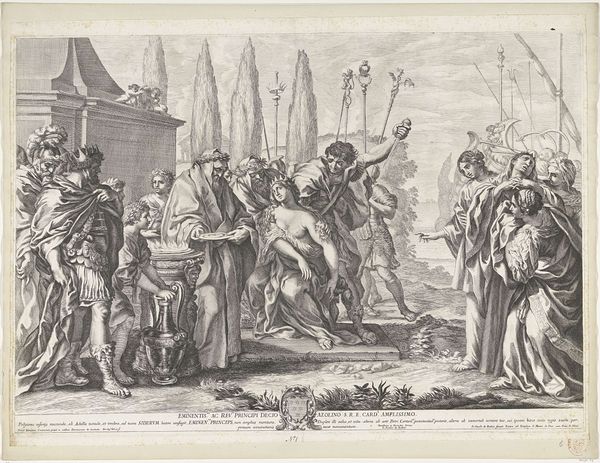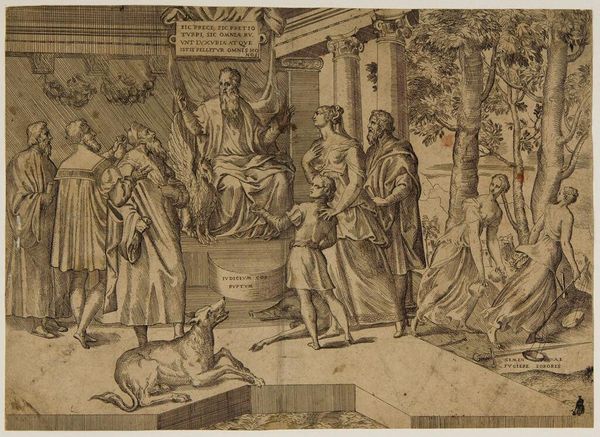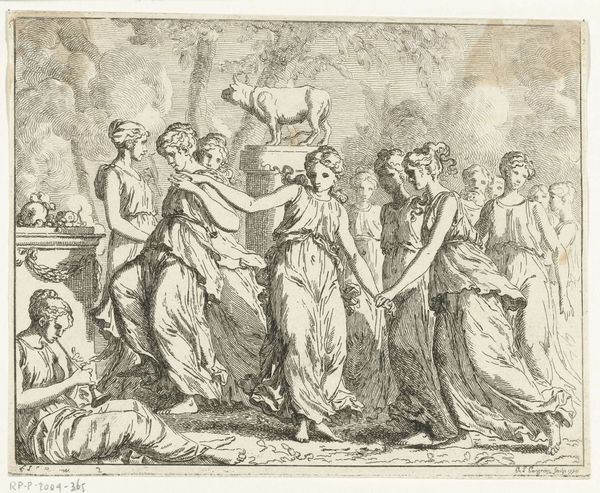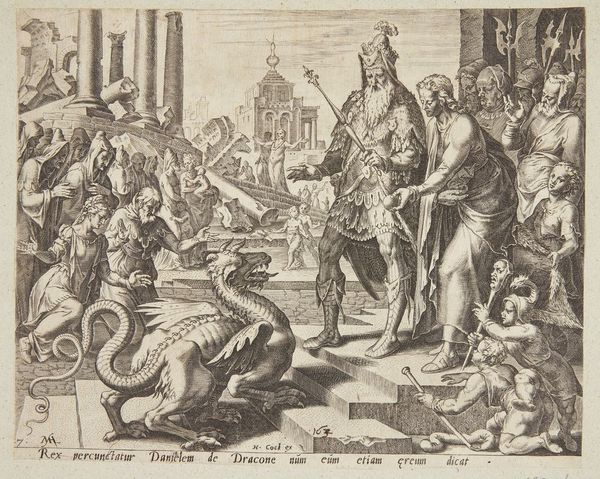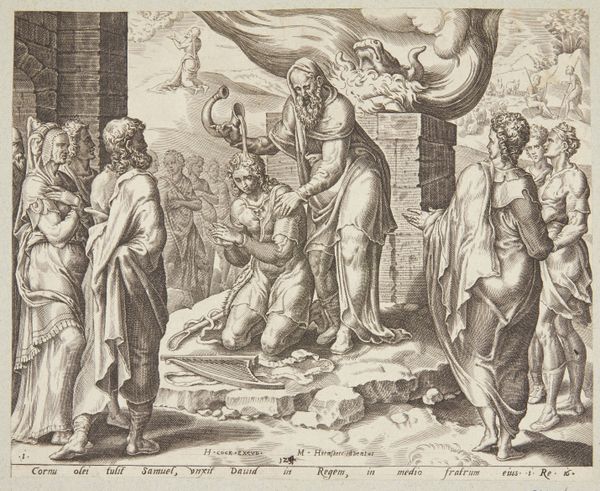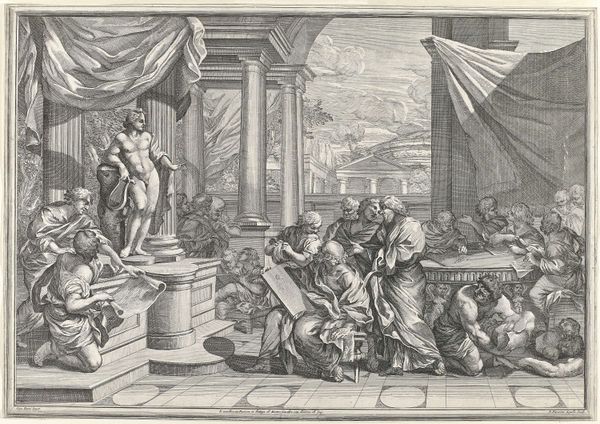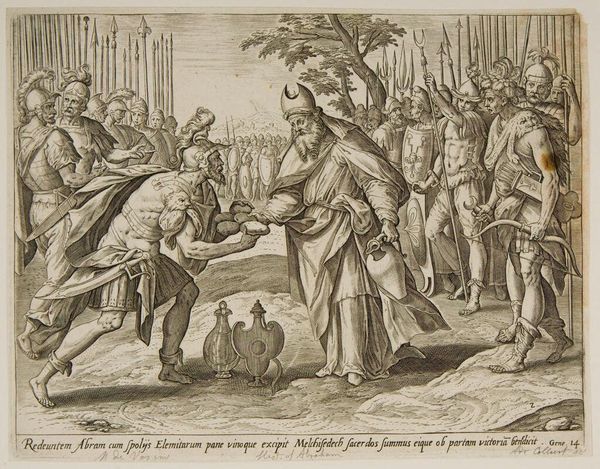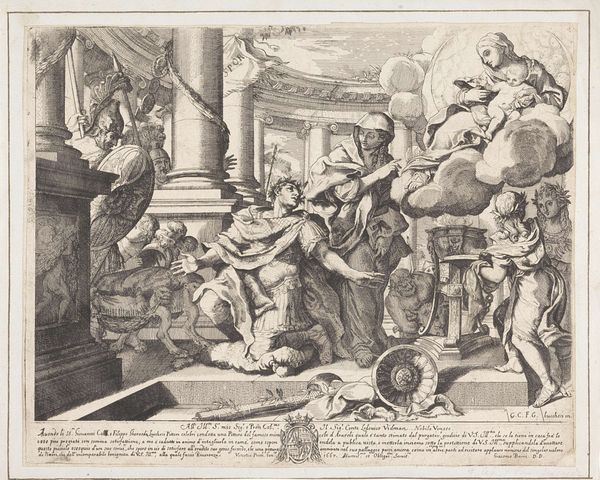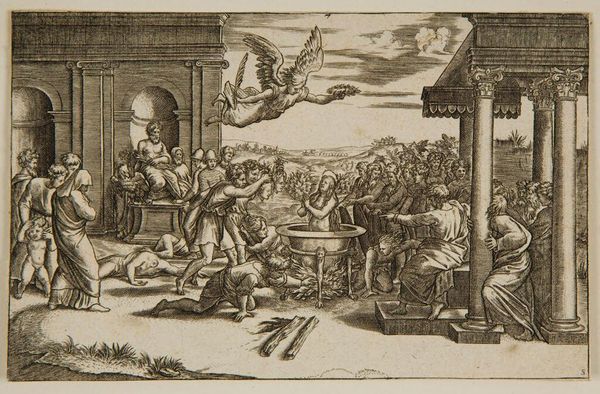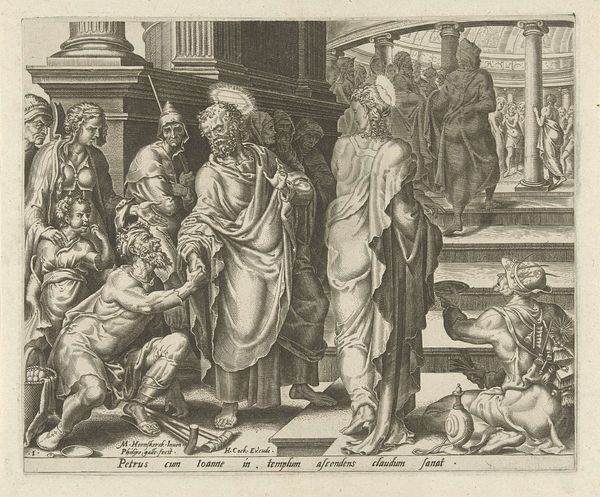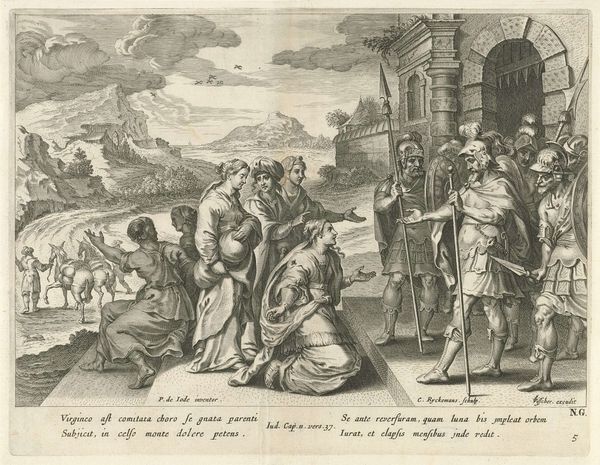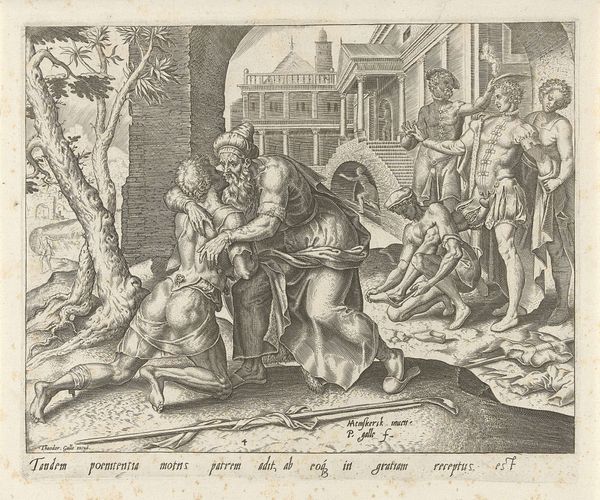
Copyright: CC0 1.0
Curator: This is Pietro Aquila’s etching, "Sacrifice of Polyxena." Note its sharp lines. The artist lived between 1650 and 1700. Editor: There's such a stark contrast between the rigid formality of the figures on the left and the almost theatrical violence about to unfold on the right. Curator: Aquila, as an engraver, disseminated images. Polyxena's story—the Trojan princess sacrificed after the war—had a specific cultural resonance. The artwork's purpose was to promote certain values. Editor: Indeed. The power dynamics are brutal. Polyxena is offered up as a prize, a spoil of war. It reflects a patriarchal view of women as disposable commodities. Curator: The composition invites us to consider the consequences of war, and how the victors consolidate their power. The architectural details on the left serve to ground the scene in a specific classical setting. Editor: The angel shielding Polyxena’s eyes almost normalizes the violence as divinely sanctioned. The male gaze here is palpable and unsettling, even centuries later. Curator: Precisely. Aquila's work can be read as a lens through which to examine social and political structures. Editor: A powerful reminder of how art can both reflect and reinforce the status quo.
Comments
No comments
Be the first to comment and join the conversation on the ultimate creative platform.
